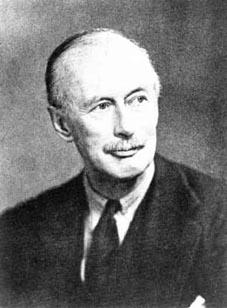October 1935: Harry Ricardo on the petrol engine
Sir Harry Ricardo - who founded Ricardo in 1927 - was an important figure in the development of internal combustion engines, and in 1935 he shared his memories of the early years of motoring in The Engineer.


Ricardo first drove a car in 1898, he said — he’d have been 13 at the time. The engine — a horizontal single-cylinder job — had ‘all its working parts exposed to the winds of heaven and the dusts of the earth below — exposed to everything, in fact, apart from lubrication.’ The carburettor was particularly troublesome, he recalled: it was a wick carburettor, a technology which didn’t survive into the 20th century, being a large container a quarter-full of petrol in which several lengths of lamp-wick were suspended. Air was drawn past these wicks — where it would pick up petrol vapour — and into the engine, taking what was supposed to be a combustible mixture into the cylinders. ‘Seldom, if ever, did the engine and I agree as to the definition of a combustible mixture,’ Ricardo said. ‘It was an unfair debate, for the engine always had the last word, spat scornfully and then sulked.’ Eventually, he developed a technique for steering with one hand and feeding the engine with the other.
Register now to continue reading
Thanks for visiting The Engineer. You’ve now reached your monthly limit of premium content. Register for free to unlock unlimited access to all of our premium content, as well as the latest technology news, industry opinion and special reports.
Benefits of registering
-
In-depth insights and coverage of key emerging trends
-
Unrestricted access to special reports throughout the year
-
Daily technology news delivered straight to your inbox










UK Enters ‘Golden Age of Nuclear’
The delay (nearly 8 years) in getting approval for the Rolls-Royce SMR is most worrying. Signifies a torpid and expensive system that is quite onerous...